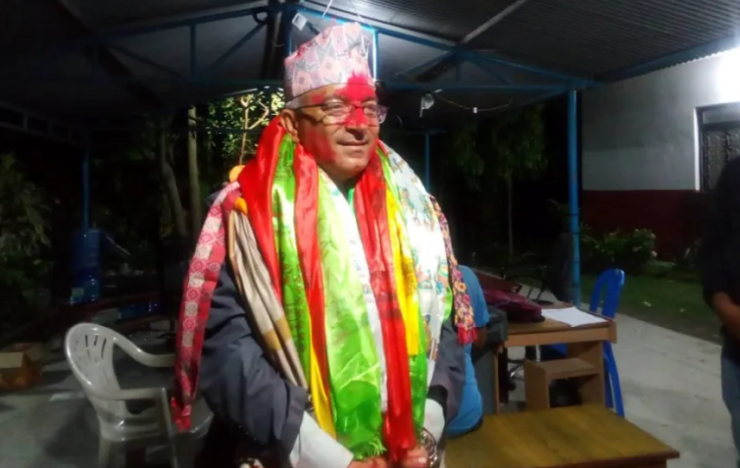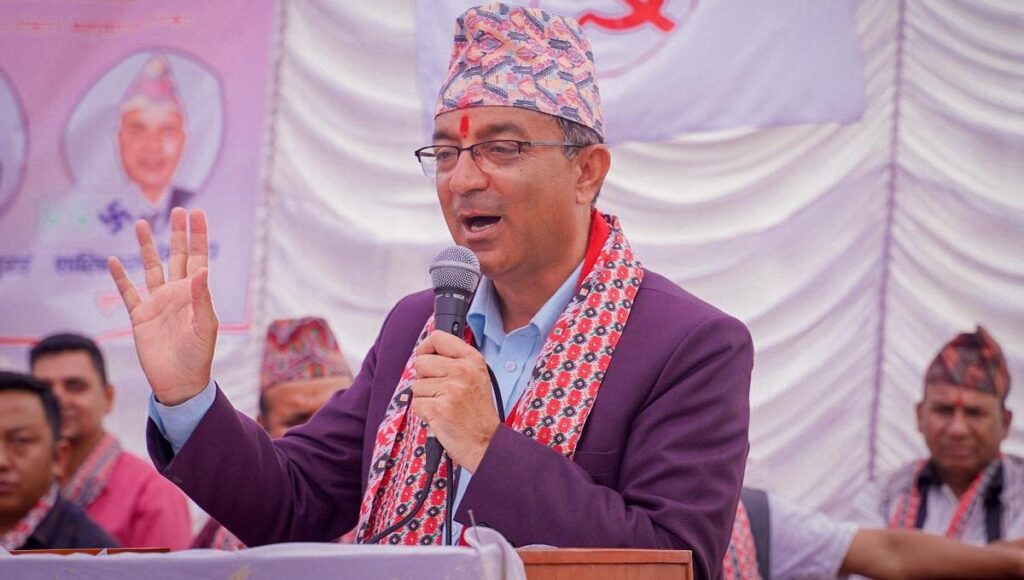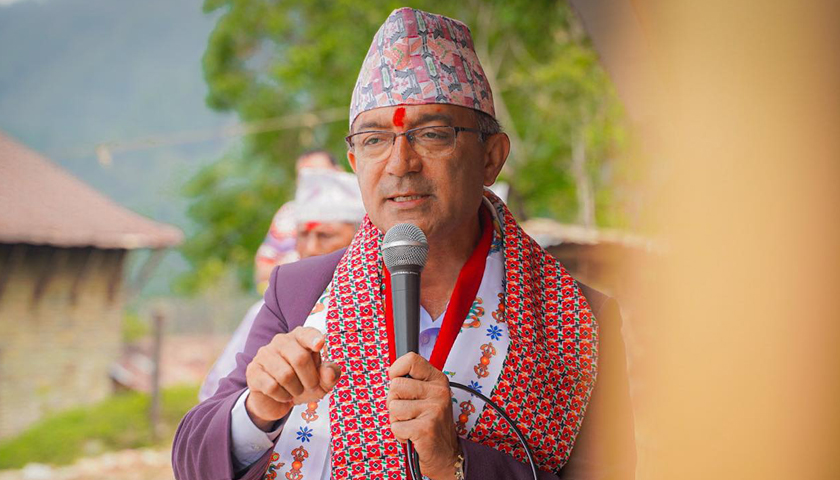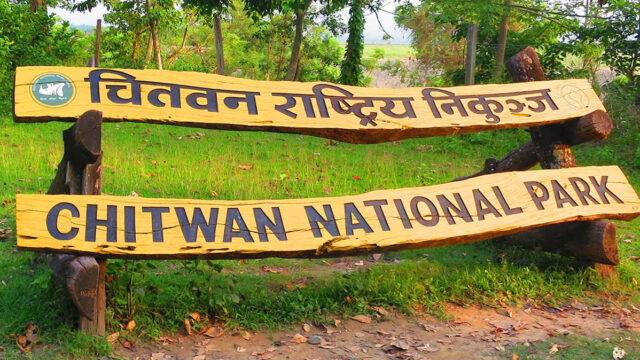Pokhara, renowned as the tourism capital of Nepal, offers breathtaking landscapes, a vibrant cultural heritage, and a growing infrastructure to support both domestic and international tourism. In a landmark announcement on Sunday, March 17, 2024, Prime Minister Pushpa Kamal Dahal declared Pokhara as the official Tourism Capital of Nepal. The declaration, made during a ceremony at Barahighat near the picturesque Phewa Lake, marked a significant step for the city and the country’s tourism industry. Recently, we conducted an insightful interview with Mr. Dhanraj Acharya, the Mayor of Pokhara Metropolitan City. Mayor Acharya shared his ambitious vision for transforming Pokhara’s tourism sector, detailing key strategies, infrastructure projects, and initiatives to establish Pokhara as a sustainable, vibrant tourist destination.
Pokhara is widely recognized as the tourism capital of Nepal. How do you plan to further enhance this status in the coming years?
“Pokhara’s identity as the ‘Tourism Capital’ is something we take great pride in,” he began, emphasizing the city’s commitment to maintaining and strengthening this role. “Our goal is to continually improve infrastructure and enhance the visitor experience. With projects like the ‘Visit Pokhara 2025’ initiative, we’re pushing for high-quality services that encourage tourists to extend their stay,” he explained, noting how longer stays contribute to the local economy. “It’s about creating lasting impressions that make visitors want to return,” he added with a smile.
Can you share the main objectives of the “Visit Pokhara 2025” campaign? What are the key projects under this initiative?
“The ‘Visit Pokhara 2025’ campaign is more than a milestone—it’s a movement to position Pokhara on the global tourism map,” he shared passionately. The campaign’s goals, he explained, are to make Pokhara an iconic travel destination, boost tourism arrivals, and celebrate Pokhara’s unique offerings. “We’re developing new trekking routes, conserving cultural sites, and enhancing tourist facilities in collaboration with the private sector,” he detailed, highlighting how this initiative marks the beginning of long-term tourism growth.
How is Pokhara Metropolitan planning to improve its infrastructure to meet the growing demands of international and domestic tourists?
“Infrastructure is a cornerstone of our strategy,” he said, explaining how road expansions, upgraded tourist facilities, and improved public transport are all in progress. “The new international airport has opened doors, and we’re leveraging this by investing in airport-linked facilities, efficient public transport, and hotel developments,” he stated, underscoring the importance of essential utilities like electricity and water in creating a seamless experience for visitors.
Pokhara offers a wide variety of tourism activities, from adventure sports to cultural tourism. What new initiatives are being taken to diversify tourism offerings and promote lesser-known attractions around Pokhara?
“On March 17, 2024, following the historic declaration of Pokhara as Nepal’s official Tourism Capital, he shared his vision for the city’s tourism future. ‘Pokhara’s charm isn’t limited to the well-known spots,’ he emphasized, pointing out the city’s hidden gems and serene landscapes near Phewa Lake, along with historic sites across the valley. ‘We’re promoting lesser-known destinations and crafting tourism packages that blend adventure and culture, encouraging tourists to explore beyond the typical hotspots,’ he explained, adding that this new designation is expected to significantly boost tourism growth for Pokhara and the broader Gandaki province.”

Data shows a significant rise in tourist arrivals in Pokhara after the construction of the new international airport. How do you intend to leverage this increased connectivity to attract even more tourists?
“The new airport has been transformative for us,” he remarked. By partnering with international airlines and promoting Pokhara in global markets, the mayor explained how the city plans to attract more visitors. “Streamlining visa processes and enhancing transportation options are also high on our agenda,” he shared, aiming to make the journey to Pokhara as smooth as the stay.
What measures are being taken to ensure sustainable tourism development in Pokhara, particularly in maintaining environmental balance while expanding tourism activities?
“Sustainability is the bedrock of our tourism strategy,” he affirmed, discussing initiatives like waste management programs, eco-friendly construction practices, and pollution regulations. “We’re supporting eco-friendly accommodations, especially around sensitive areas like lakes and forests, to ensure these natural sites are preserved for future generations,” he explained, showing his deep commitment to an environmentally balanced approach.
What role does local culture and heritage play in your tourism development plan for Pokhara? Are there any specific cultural projects in place to attract tourists?
“Pokhara’s culture and heritage are its soul,” he reflected. Ongoing projects focused on preserving traditions and festivals aim to give tourists an authentic cultural experience. “Events celebrating traditional music, dance, and art are being promoted, alongside historical site restorations,” he said, highlighting how these projects allow visitors to truly engage with Pokhara’s heritage.
How are you collaborating with the private sector, including hotels, trekking agencies, and other service providers, to ensure quality experiences for tourists visiting Pokhara?
“The private sector is an invaluable partner in our tourism journey,” he remarked, detailing how regular training programs, joint marketing efforts, and high-quality standards are jointly maintained. “Their support enables us to offer memorable experiences for visitors, and we make sure they have a voice in our planning and decision-making,” he emphasized, showing the importance of partnership in Pokhara’s tourism success.
Many tourists come to Pokhara for adventure sports like paragliding, trekking, and boating. How are you ensuring safety standards and international quality in these sectors?
“Safety is non-negotiable,” he stated firmly, explaining the enforcement of international safety standards in adventure sports. “We conduct regular inspections, require certifications for guides, and provide training for operators,” he said, describing how rescue teams and safety equipment investments help create a secure environment for domestic and international tourists.

Pokhara also has great potential for eco-tourism. Are there any plans to promote eco-friendly accommodations and activities in Pokhara?
“Eco-tourism is close to our hearts,” he said with a smile. By supporting hotels and resorts that adopt sustainable practices and providing incentives for green initiatives, the city aims to champion eco-friendly tourism. “Local communities are also involved in developing eco-friendly packages that emphasize conservation and environmental education,” he explained, seeing eco-tourism as a way to harmonize growth and preservation.
Could you provide an update on ongoing infrastructure projects, such as road expansions, tourist facilities, and public transport services, that aim to improve the overall tourist experience in Pokhara?
“We’re committed to infrastructure upgrades that make Pokhara easier to navigate and explore,” he shared. Current projects include road expansions to reduce congestion, new tourist facilities around major attractions, and improved public transport services. “Our goal is for tourists to feel safe and welcome when visiting Pokhara,” he added, describing high-mast light installations to enhance nighttime visibility and security.
With Pokhara hosting several international festivals and events, how are you positioning the city as a hub for cultural tourism and international gatherings?
“Pokhara has immense potential as a center for cultural tourism,” he stated. Festivals and events are at the core of the city’s strategy, with partnerships with cultural organizations creating memorable experiences for visitors. “By hosting various events year-round, we’re positioning Pokhara as a destination for international cultural exchanges,” he explained, envisioning a vibrant, globally connected city.
What challenges do you face in managing tourism growth in Pokhara, and how are you addressing them?
“Rapid tourism growth brings both opportunities and challenges,” he admitted. Environmental impacts, infrastructure demands, and safety standards are all focus areas. “We’re implementing sustainable tourism practices and enhancing infrastructure to address these challenges,” he shared, outlining a balanced approach that aims to protect the city’s natural beauty while fostering tourism.
Looking beyond 2025, what is your long-term vision for Pokhara’s tourism industry, and how do you plan to sustain its growth?
“Our long-term vision is to make Pokhara a premier tourism destination renowned for its natural beauty, rich culture, and sustainable practices,” he shared, showing pride in the city’s future. “We’re committed to expanding infrastructure, promoting eco-friendly initiatives, and preserving cultural heritage,” he said, emphasizing partnerships with the private sector, local communities, and government agencies as crucial to sustaining Pokhara’s tourism growth for future generations.
Mayor Acharya’s responses highlight a multi-faceted and forward-thinking approach to solidifying Pokhara’s role as Nepal’s premier tourism hub. With projects like the “Visit Pokhara 2025” initiative, infrastructural enhancements, environmental sustainability, and cultural preservation, the vision for Pokhara extends beyond immediate tourist influxes to a sustainable and diverse tourism ecosystem. Through strong partnerships with the private sector, local communities, and international stakeholders, Pokhara aims to balance development with preservation, ensuring the city remains a cherished destination for future generations.






